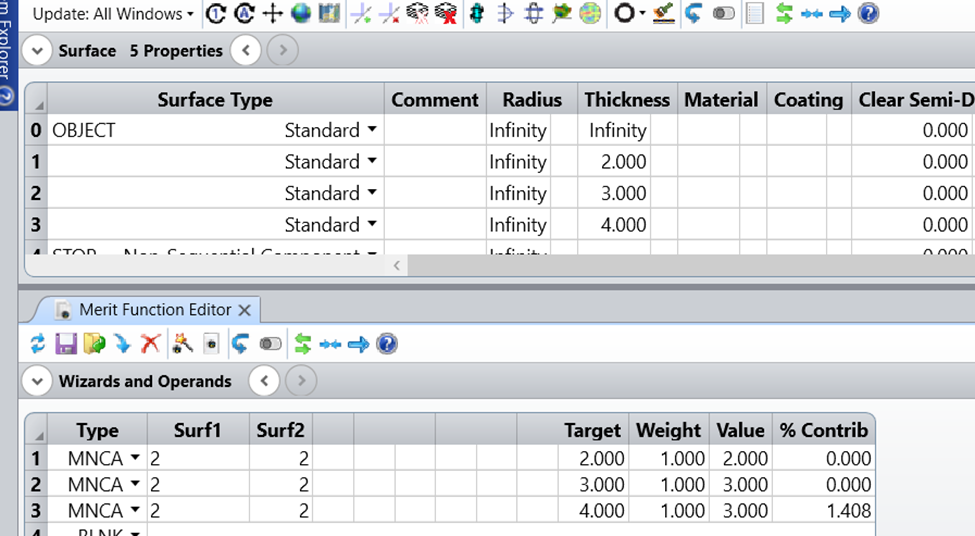MNCA, MNEA, MNEG, MNEG,MXRE,MNRI belong to boundary operand catalog. The way they calculate is slightly different from normal operands.
These operands perform differently with one surface or multiple surfaces selected.
For the case where only one surface is selected: The rule is if the boundary is violated, the actual value is shown; if it is not violated, the value is set to the target and is therefore ignored by the optimization algorithm. You can tell this from the merit function row 3. The target is 4, which violates the boundary, so the value is the actual value 3 and this contributes to the final merit function.

When it comes to multiple surfaces, this operand counts all violations and compare with the target set for this operand.
For row 5, the violation value is 5-2 =3. (Target 5 – surface thickness 2, for only 1 surface, it follows the rule I mentioned above)
For row 6, the violation value is (5-2) +(5-3) = 5. In this case, the overall violation value is 5, the value of this operand is “target – violation = 5- 5 =0”. This is how the value 0 is calculated.
For row 7, the total violation value is (5-2) + (5-3) +(5-4) = 6. In this case, the overall violation value is 6, the value of this operand is “target – violation = 5- 6 =-1”. This is how the value -1 is calculated.

When you change the target, you change the total violation value. This is going to change the value of this operand considering the change of the target and the violation.

More information can be found in:
The Optimize Tab (sequential ui mode) > Optimization Overview > Understanding Boundary Operands